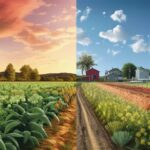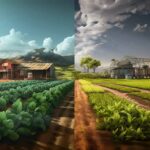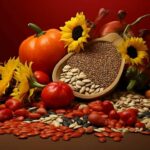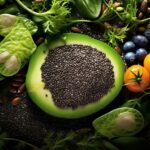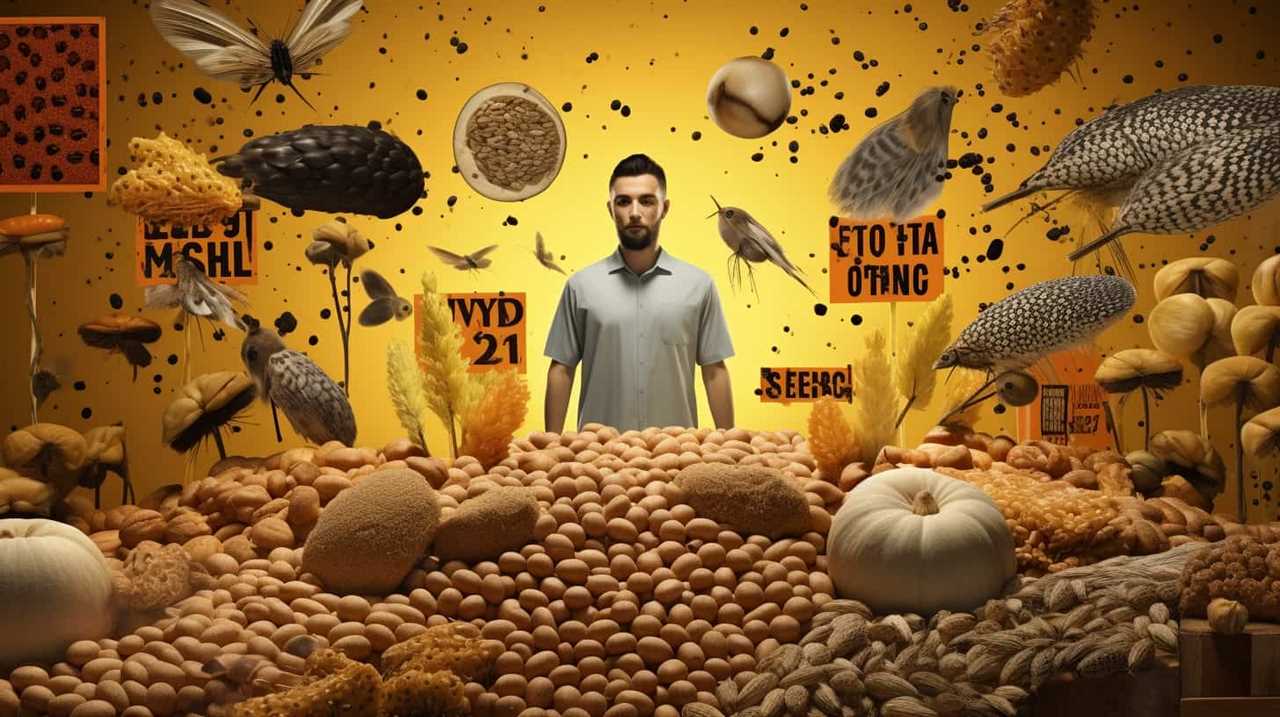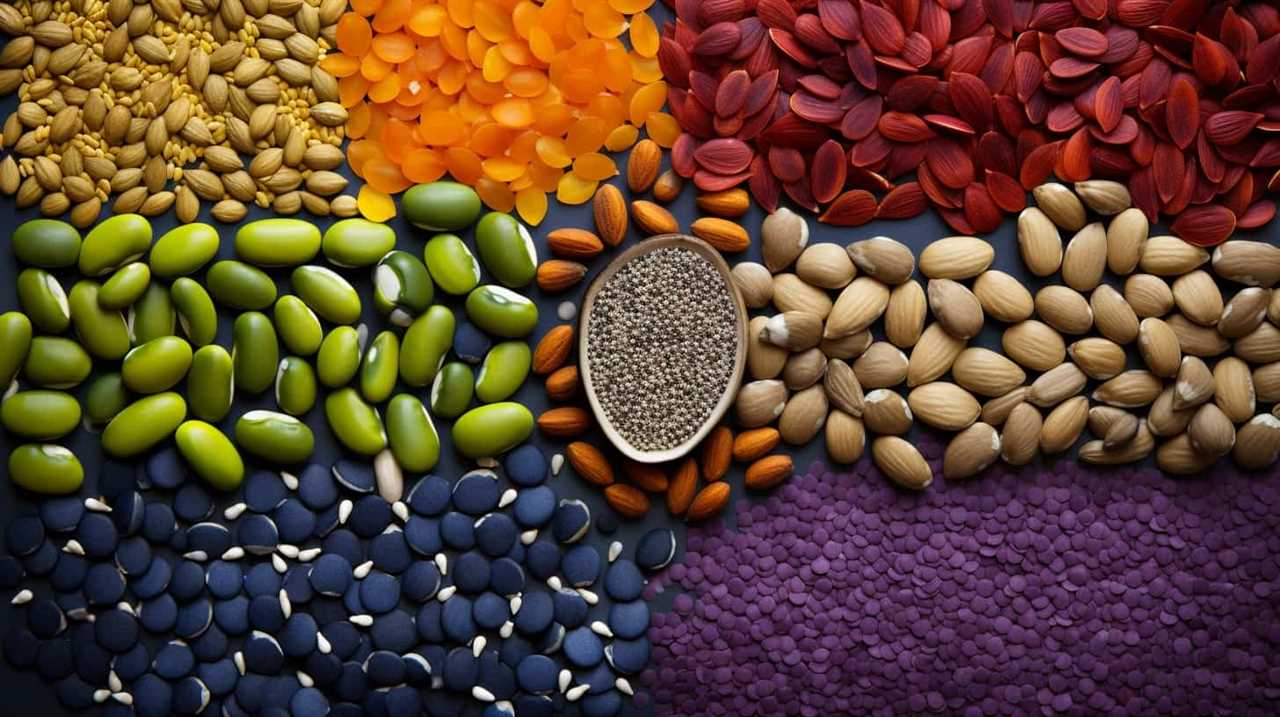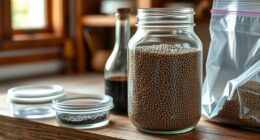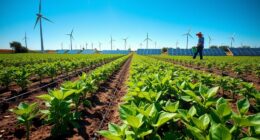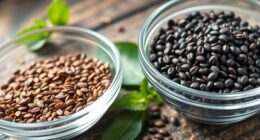Here we are ready to delve into the world of advanced seed cultivation techniques. With cutting-edge technology at our disposal, our aim is to increase crop yields and maximize the potential of our agricultural products.
By selecting the right chia seed variety, optimizing soil and climate conditions, implementing efficient irrigation systems, and utilizing proper nutrient management, we are on the path to achieving remarkable results.
Join us on this exciting journey as we explore the methods to unleash the true potential of our harvest.
Key Takeaways
- Seed germination rates are crucial for maximizing production.
- Evaluating chia seed adaptability to different growing regions is important.
- Smart irrigation techniques maximize productivity and minimize water waste.
- Integrated pest management combines various methods to minimize damage.
Choosing the Right Chia Seed Variety
When it comes to maximizing production, selecting the appropriate chia seed variety is crucial for our success. Comparing seed germination rates and evaluating chia seed adaptability to different growing regions are key factors to consider.
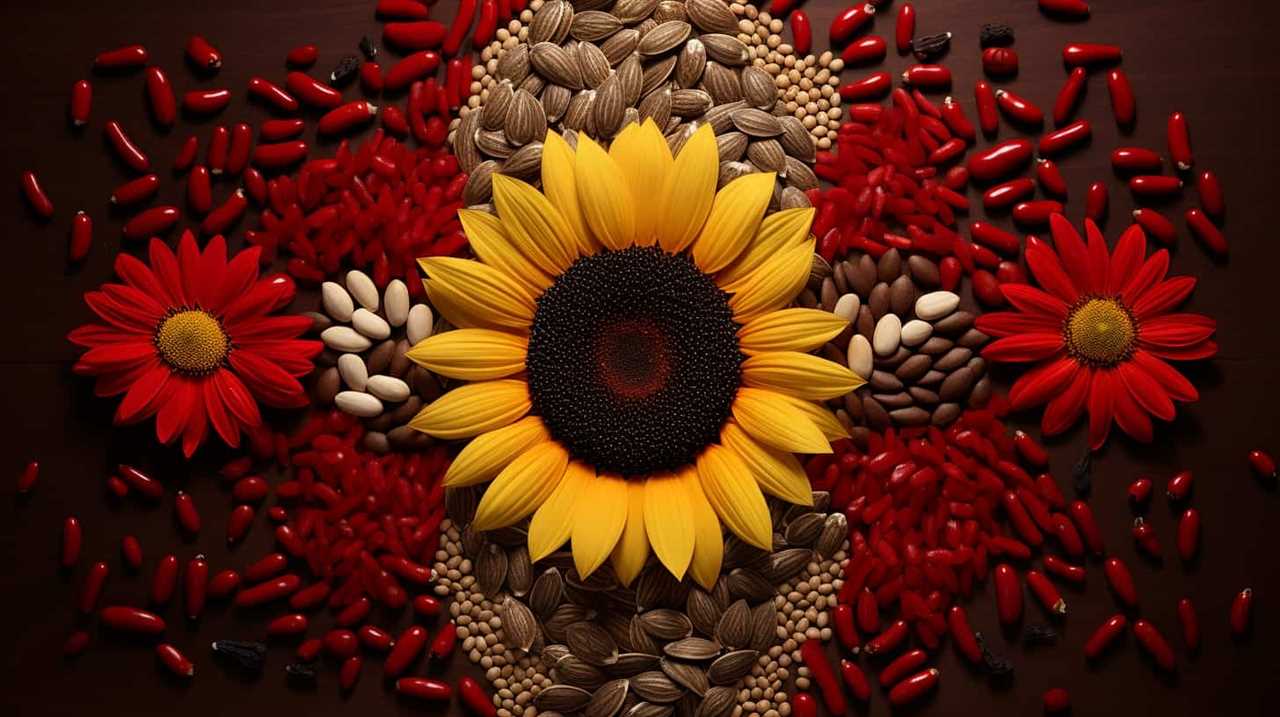
We must carefully analyze the different varieties available to ensure we choose the one that will thrive in our specific conditions. By comparing the germination rates of various seeds, we can determine which variety will provide the highest yield.
Additionally, evaluating adaptability to different growing regions allows us to select a variety that can flourish in diverse environments, expanding our production capabilities.
Taking these factors into account will enable us to make informed decisions and optimize our chia seed cultivation, resulting in increased productivity and success in our endeavors.
Optimizing Soil and Climate Conditions
To optimize our chia seed cultivation and achieve high yields, we focus on optimizing soil and climate conditions. This involves implementing precision agriculture techniques and improving crop rotation. Here are three key strategies we employ:

- Soil analysis: We conduct regular soil tests to assess nutrient levels and pH balance. This allows us to make informed decisions about fertilizer application and soil amendments, ensuring optimal conditions for chia growth.
- Climate monitoring: We use advanced weather monitoring systems to track temperature, humidity, and rainfall patterns. This data helps us adjust irrigation schedules, protect against extreme weather events, and create microclimates that promote healthy chia plants.
- Cover cropping: Implementing diverse cover crops between chia cultivation cycles helps improve soil structure, suppress weeds, and enhance nutrient cycling. This sustainable practice contributes to long-term soil health and supports high-yield chia production.
Implementing Efficient Irrigation Systems
We further enhance our chia seed cultivation by implementing efficient irrigation systems, ensuring optimal water management throughout the growing season. By utilizing smart irrigation techniques and water conservation strategies, we’re able to maximize the productivity of our crops while minimizing water waste.
Our irrigation systems are equipped with sensors and automated controls that monitor soil moisture levels and weather conditions in real-time. This allows us to deliver water precisely when and where it’s needed, preventing both over- and under-irrigation. Additionally, we employ techniques such as drip irrigation and micro-sprinklers, which minimize water evaporation and runoff. These strategies not only conserve water but also reduce the risk of soil erosion and nutrient leaching.
With our efficient irrigation systems in place, we can ensure that our chia plants receive the right amount of water at the right time, promoting healthy growth and high yields.
Moving forward, let’s explore how utilizing proper nutrient management can further enhance our chia seed production.
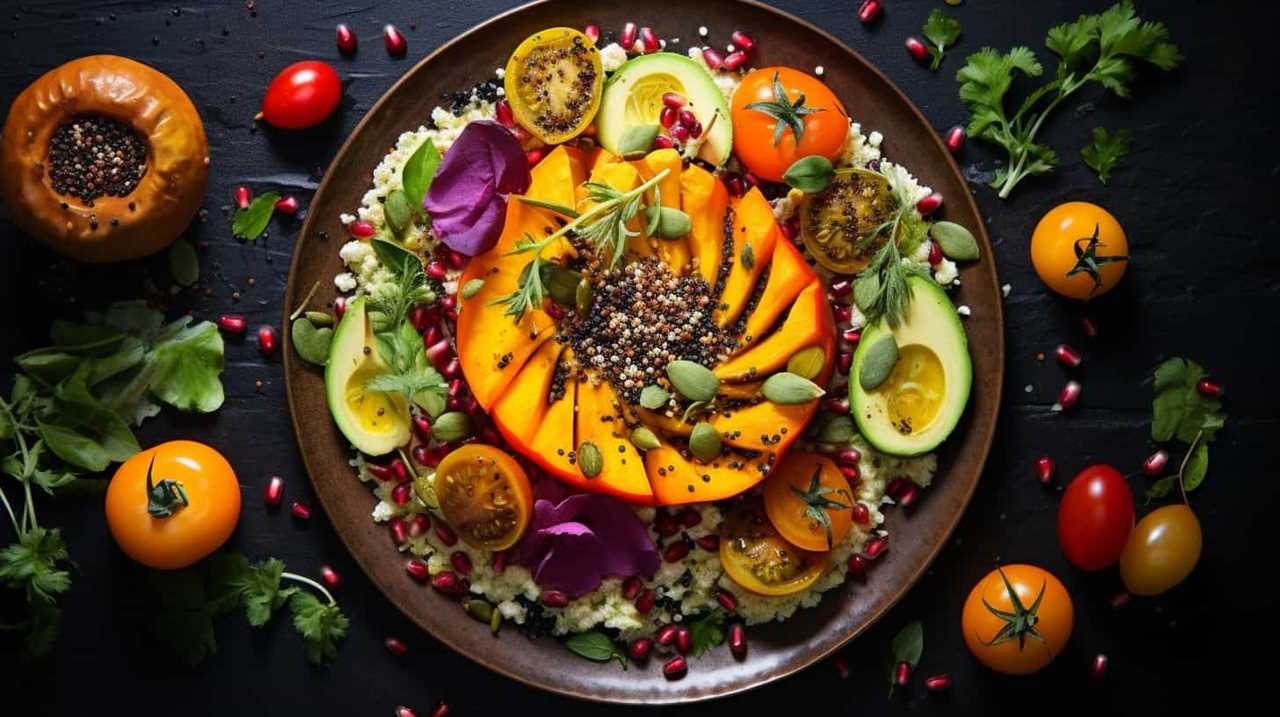
Utilizing Proper Nutrient Management
To optimize our chia seed production, we implement proper nutrient management techniques. This is crucial in ensuring healthy plant growth and maximizing yield. Here are three key practices we employ:
- Benefits of organic fertilizer: We utilize organic fertilizers, such as compost and manure, which provide essential nutrients while improving soil health. Unlike synthetic fertilizers, organic options release nutrients slowly, preventing nutrient runoff and minimizing environmental impact.
- Importance of crop rotation: We rotate chia crops with other compatible plants to maintain soil fertility and reduce pest and disease pressure. This practice helps break pest life cycles, improves soil structure, and prevents nutrient depletion. By diversifying the crops, we promote overall ecosystem health and sustainability.
- Precision nutrient application: We conduct soil tests to determine nutrient deficiencies and tailor fertilizer applications accordingly. This precise approach ensures that the plants receive the right amount of nutrients, avoiding wastage and minimizing environmental contamination.
Implementing Effective Pest and Disease Control Measures
As we continue optimizing chia seed production, we implement effective measures to control pests and diseases. Integrated pest management (IPM) is a key strategy we employ, which involves combining various pest control methods to minimize damage while reducing reliance on chemical pesticides. One of the main components of IPM is the use of biological control measures, which involve the introduction of natural enemies or predators to target and control pest populations. This approach is both environmentally friendly and sustainable, as it reduces the need for synthetic pesticides and promotes the natural balance of ecosystems. By incorporating IPM and biological control measures, we can effectively manage pests and diseases while maintaining the health and productivity of our chia seed crops.
| Pest Control Method | Description |
|---|---|
| Biological Control | Introducing natural enemies or predators to control pest populations |
| Cultural Control | Modifying cultural practices to reduce pest damage |
| Physical Control | Using physical barriers or traps to prevent pest infestation |
| Chemical Control | Utilizing approved chemical pesticides when necessary |
| Genetic Control | Developing pest-resistant crop varieties through genetic modification |
Conclusion
In conclusion, by carefully selecting the appropriate chia seed variety, optimizing soil and climate conditions, implementing efficient irrigation systems, utilizing proper nutrient management, and implementing effective pest and disease control measures, farmers can boost their production using high-yield seed techniques.
Just as a symphony conductor harmonizes different musical instruments to create a masterpiece, these techniques work together seamlessly to orchestrate a bountiful harvest, ensuring a prosperous future for agricultural endeavors.



